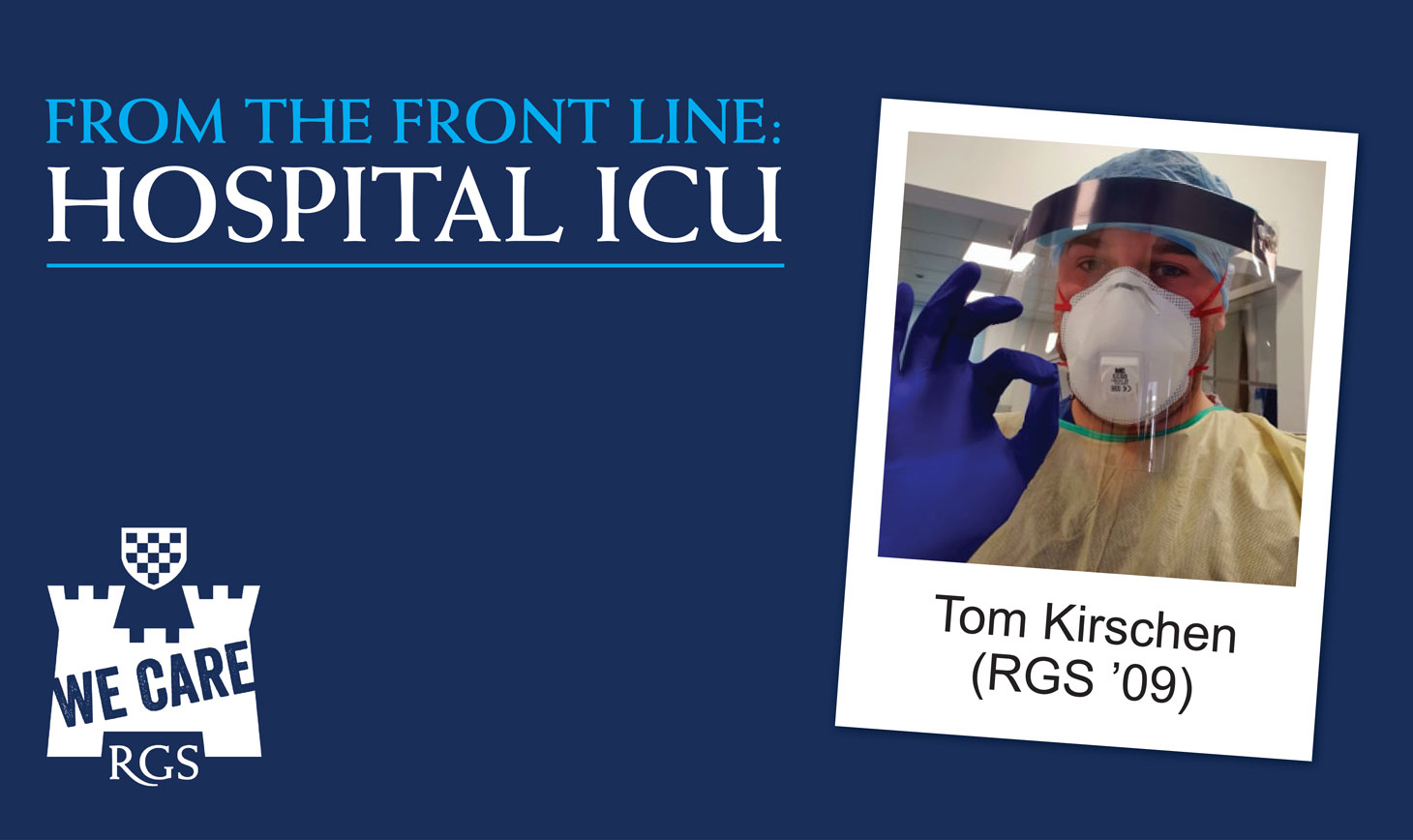
From the front line: hospital ICU
Dr Tom Kirschen (RGS ’09), an anaesthetist working in intensive care at King’s College Hospital, has kindly spoken to us about his experiences working on the front line treating Covid-19 patients.
“As the number of cases began to climb in the UK, colleagues and I became ever more anxious. With the anticipation of things to come and an expectation of the worst, as portrayed in the media from Italy, we imagined corridors lined with patients waiting for critical care treatment, with others being denied treatment on account of their age or medical history. Thankfully, it has been more manageable than expected and we have consistently been able to meet demand.
As expected, we have certainly seen higher mortality rates than we’re accustomed to, which can be difficult to deal with and there is undoubtedly an emotional fatigue associated with this. The extent of this fatigue will largely be dictated by duration, however, and not the specific mortality of coronavirus. In fact, having predicted a 50% death rate among the intensive care cohort, many hospitals are achieving less than 30%, with this being the most critically ill group of affected people. Nonetheless, it is quite conceivable that there will remain critically ill patients with coronavirus for many months, or even a few years, to come.
For those patients requiring intensive care, it typically takes two to three weeks of supported ventilation, deep sedation and at times support of other organs, particularly the kidneys and cardiovascular system, before being well enough to move to a normal ward. This can also be delayed by extensive episodes of delirium which is not unusual following a period of sedation. Similarly, the physiological impact of being ventilated and sedated for that length of time – not even breathing for oneself – results in a profound loss of muscle mass, which can significantly affect progress in breathing independently, talking and mobilising.
As for the future – anyone who offers a clear picture is speculating. We simply cannot reliably predict the trajectory this will take. Clinically, the patterns of pathophysiology are nothing short of bizarre, with patients showing great variation in their illness, quite unlike many of the typical illnesses seen in intensive care. For example, rather than seeing a steady decline in blood pressure over an hour say, it may fall quite suddenly, inducing an immediately life-threatening situation in a patient felt to be stable minutes earlier. Some patients exhibit interference with their pulmonary circulation making the balance of gases in the blood unstable. Blood clots in the deep veins and lungs are common, but not universal, and the incidence of renal failure remains high but largely unpredictable. So from a clinical perspective, there is no well-established pattern to follow and I feel the epidemiology of this is likely to be the same. As such, I can only imagine a gradual, ever-reviewed process is required with a hesitancy to return to normal life probably a safer option than haste.
On a personal note, I have to admit I have no idea what lockdown ‘normal’ is for the majority of the nation. I still get up, go to work, albeit on an adjusted shift pattern, get into my scrubs and PPE and onto the unit. I don’t go to work feeling especially endangered, though without doubt we all know there is a risk and are are constantly vigilant of where the threat is coming from. I know I have coronavirus on me, and I’m meticulous about removing my PPE systematically, washing my hands and face before I head home from a shift. With this said, having it on me can’t hurt me, or my partner, I just need to prevent it from getting into us! Meanwhile, as always, my A&E nurse fiancé is much braver than I, barely giving the situation a second thought – perhaps thanks to some terrifying experiences in Sierra Leone responding to the Ebola crisis – but it keeps me both balanced and motivated.
As for now, I am feeling cautiously optimistic. The number of patients being discharged is increasing, while the in-flow of new patients is decreasing. There remains anxiety over the prospect of a post-lockdown resurgence, and the question of whether we see a further peak in the autumn as global travel is likely to be re-established and the weather cools. Nonetheless, I am confident the NHS will be better prepared and better experienced to respond, perhaps even alongside many of the usual services that we hope to see reinstated over the coming weeks and months. In the meantime, we need to encourage each other to continue with the special measures in place as, despite my cautious optimism, we are not out of the woods just yet. We will be though, and I look forward to joining you in celebration when the day comes. Stay safe.”
Tom also recorded a short video message – click here to watch.
